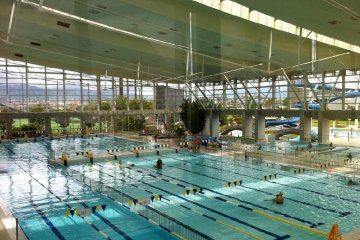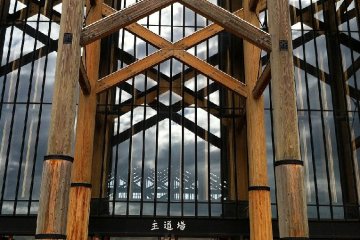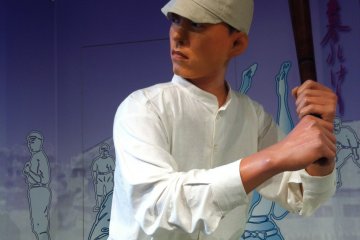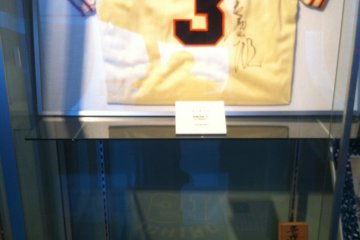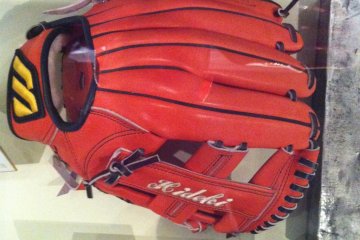There are many good reasons to go and visit Matsuyama’s Chuo Koen. This Central Park has a fantastic martial arts hall—the Ehime Prefectural Budokan, a swimming pool complex—Aqua Palette, and a professional baseball ground—Botchan Stadium. It’s right next to a train station, and it has free parking, so it’s easy to get to.
Another reason to visit is this—Botchan Stadium is home to the No-Ball Museum, a rather delightful collection of Japanese baseball exhibits, both recent and historical. “No-Ball” is certainly an odd name. Translated into Japanese, baseball becomes yakyu, and another reading for the character ya, meaning ‘field’, is no. So it’s ‘field ball’. You see? No, I didn’t think so.
Putting the tangled issue of names aside, the museum is housed in two little buildings on either side of the entrance to the stadium. The one on the right charts the history of the game in Japan from the Meiji Period, when the haiku master Masaoka Shiki championed the sport in Matsuyama. Shiki wrote a guide to baseball, translating the various terminology involved. Unfortunately the museum promotes the pernicious myth that baseball started in Cooperstown, America, despite the fact that Stephen Jay Gould has demonstrated that it began as one of several stick and ball games in England. Gould knows all about evolution, so he should be trusted. I must talk to the management about this matter.
There’s a small selection of attractive and interesting memorabilia from Japanese baseball spanning a whole century, including photos, magazines, trophies, medals and videos. Women’s baseball is not overlooked either. For someone with an interest in design, the intersection of a western sport with an Asian culture is quite fascinating. Who knew that the spirit of baseball was actually a dragon?
The other part of the museum has a lot of uniforms and gloves from well known Japanese players, including Ichiro and Matsui. There are handprints in metal too. These guys have big hands. There are some jolly games for children and foolish parents, including an opportunity to pitch 12 balls at an unreasonably small numbered grid for 100 yen.
For the sake of full disclosure, I should confess that I actually hate baseball, and the intrusion of Japanese baseball in my life via television and other media really grates on my nerves. Nevertheless, I enjoyed visiting the No-Ball Museum and I’m sure it must be quite a treat for someone who actually likes baseball. Entry is free, another bonus.



